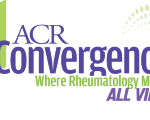“There’s a lot that’s of particular interest to rheumatologists because COVID-19 is an infection, but it’s an infection that triggers an inflammatory cascade,” says Dr. Rubin. “It turns out that some of our most effective therapies are likely directed against host inflammation, which are the same drugs we use for rheumatologic diseases.
“So the illness is sort of on the cusp between infectious disease and rheumatology. In fact, when I was seeing patients in the hospital last month, we had both an infectious disease specialist and a rheumatologist advising each one of the teams.”
Given the fluid nature of the pandemic, expect key highlights to include a timely look at virus concerns current in November when the ACR event will be held, in addition to Dr. Rubin’s insights into how the virus hit at a time of great change in the medical journal industry.
Being in the medical communication business means accepting that stand-alone journals aren’t likely to last forever. In today’s world, medical professionals—like everyone else—get information in many forms strikingly different from how they have in the past, notes Dr. Rubin.
“We have to really be future-proofing ourselves,” he says. “How are we going to have the same sort of impact that we have now in a world where people don’t have time to read articles, are used to seeing things on their phones and engage information in very different ways? We’re thinking about that.”
The emergence of medical journal preprints that have not been peer reviewed is relatively new and picked up steam within the last year, says Dr. Rubin. It raises the question of whether evaluating these submissions in the traditional way is even possible or practical.
“We’ve seen examples of [preprints] working well and plenty of examples of it not working well,” he says. “I think it’s going to take a little bit of time to digest the messages in that, but clearly we have a lot of material to look at right now.”
Continuing Research
Before taking the helm at the NEJM in September 2019, Dr. Rubin worked part-time as an associate editor at the journal and thoroughly enjoyed it. He still loves the work as much as his other jobs as a scientist and a physician.
He spends at least a day each week working in his lab at Harvard T.H. Chan School of Public Health and meeting with graduate students and post-doctoral fellows. He says he agreed to take the editor job provided he didn’t have to give up his research.


